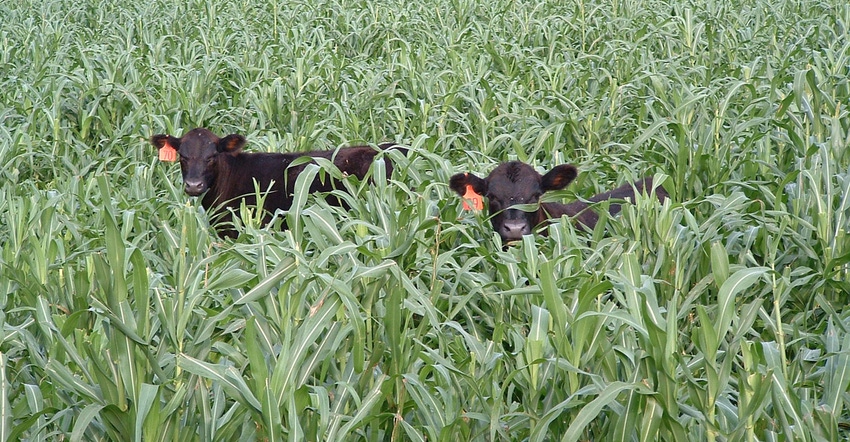
Millet is a forage that beef producers may be offering for grazing or baling as hay, but it comes with a warning label: It can become high in nitrates, which can lead to nitrate poisoning.
“A quick Google search will help you find out there are many types of millet, such as Japanese millet and white proso millet, but the most common in the forage world is hybrid pearl millet,” says Doug Hanson, president of the Illinois Forage and Grassland Council. He also is a seed specialist at ProHarvest Seeds and a cattle producer near Danforth, Ill.
Hybrid pearl millet is a summer annual planted when soil temperatures are 65 degrees F or higher. In Illinois, this means planting typically occurs from mid-May through June 1, he says. Producers turn to the versatility of this forage due to fast growth and germination paired with a low concern of prussic acid.
That’s the good news for this most useful summer annual. The bad news is that some factors can create high nitrate levels in the forage.
Planting millet in high nitrate areas or receiving rain after a long period of slow growth can cause nitrogen to move up through the plant, Hanson says. This means nitrogen needs time to disperse before harvesting or allowing cattle to graze. Otherwise, cattle could be exposed to high levels of nitrates.
To be sure millet is safe, the best thing you can do is have it tested by your nutritionist or feed company, he says. All is not lost if the test comes back high in nitrates. Hanson says beef producers can mix it with another forage source or total mixed ration to dilute the amount of nitrates cattle consume.
High levels of nitrates can affect all beef cattle and in different ways based on age and stage of production; typically, by the time an animal displays the physical signs of nitrate poisoning, it’s too late to save it. Therefore, Hanson recommends consulting your local nutritionist to create a feeding program that will allow you to safely feed your cattle millet with high nitrates.
How to control nitrate levels
Hanson shares some advice on how to prevent millet from reaching high nitrate levels:
1. Consider maturity. The more mature a plant is, the less possibility of nitrates. Generally, there are more nitrates in the lower portion of the plant. If you have a concern that your millet may have nitrates, then you can let the forage grow and mature a little longer before harvesting or grazing.
2. Harvest after 45 days. At this point, millet is typically mature at 3 feet tall, which is the optimum tonnage and quality combination for stored feed or hay. With adequate rainfall, millet should be ready to harvest every 30 days with 3 feet of regrowth. Leave 4 to 6 inches after cutting to control nitrate levels in the forage.
3. Graze after 35 days. By this time, millet is 18 to 24 inches tall and safe for cattle to graze. This allows producers to pull cattle off the forage and leave 8 inches to prevent nitrate poisoning and encourage healthy regrowth.
4. Add nitrogen when appropriate. Sometimes producers add up to 120 units of nitrogen to try to maximize tonnage. This exceeds the recommended 40 to 60 units of nitrogen for millet and can increase nitrate levels in the forage. Hanson says you can better control nitrate levels by adding the suggested amount of nitrogen to start with, and then apply more as needed.
Despite the risk, millet is a good forage to use, Hanson says. Manage nitrates right, and millet can be a cow saver through tough summer grazing slumps.
About the Author(s)
You May Also Like






